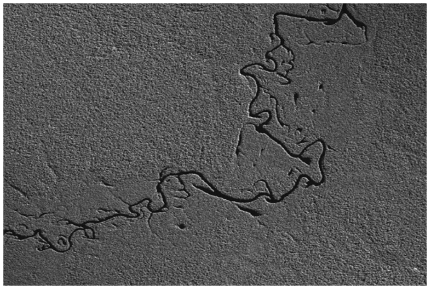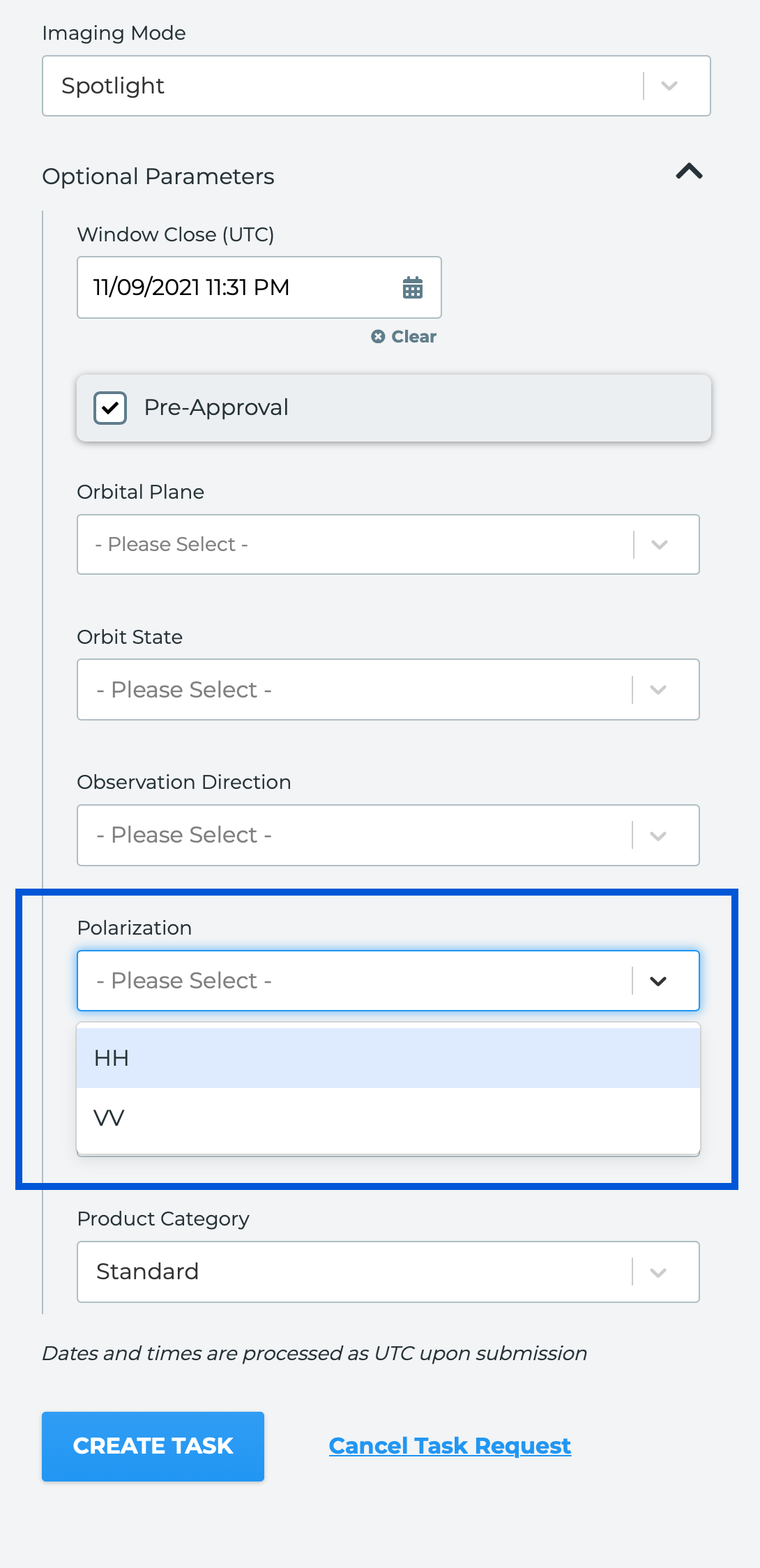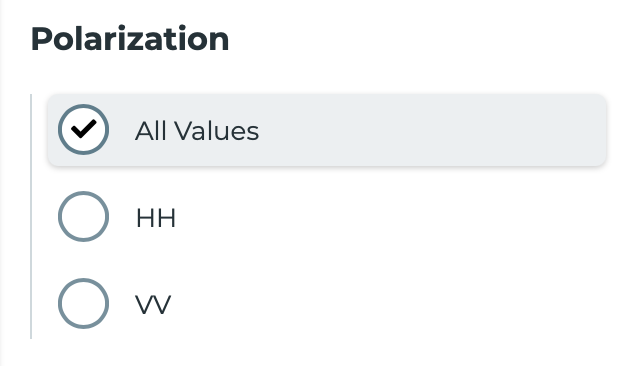Polarization Options
Capella’s single-pol SAR system enables tasking and filtering by HH or VV polarization, each offering distinct imaging advantages. This article explains how polarization affects image interpretation, highlights real-world use cases like shoreline detection and oil spill monitoring, and shows users how to select polarization in both tasking workflows and archive searches.
Polarization Overview
Synthetic aperture radar uses electromagnetic waves to form images. As the name implies, electromagnetic waves consist of an electric field and a magnetic field. Polarization refers to the orientation of the electric field vector with respect to the ground.
In radar, we use the terminology vertically-polarized and horizontally-polarized. Vertically-polarized electromagnetic waves have the electric field aligned with a plane that is vertical with respect to the ground, whereas horizontally-polarized electromagnetic waves have the electric field oriented parallel to the ground. Vertically-polarized electromagnetic waves reflect more strongly than horizontally-polarized electromagnetic waves from physical structures that have dominant vertical members, e.g., a vertical metal pole protruding from the ground. Horizontally-polarized electromagnetic waves reflect more strongly from structures with dominant horizontally-oriented members.
Capella's SAR constellation is a single-polarization (single-pol) system that transmits and receives in the same polarization. This allows us to produce horizontal transmit, horizontal receive (HH) or vertical transmit, vertical receive (VV) imagery.
Different polarizations provide different received backscatter data, which can highlight various electrical and geometric properties of the imaged area like surface roughness and moisture content.

Examples

HH polarization image with a 27.76 degree look angle.

VV polarization image with a 23.63 degree look angle.
Use Cases
There are a variety of use cases for different polarizations. Below are a few examples.
Object Detection - Imaging in HH works well for object and hard target detection due to HH being less sensitive to surface roughness. This reduced scattering from terrain or the ocean increases the signal to clutter ratio in imagery of vehicles or other point-like (non-distributed scattering) targets.
Shoreline Detection - HH is also preferred for shoreline detection as VV is more sensitive to backscatter caused by sea surface roughness due to wind. HH provides better contrast between water and land surfaces.
Oil Slick Detection - As mentioned, VV is more sensitive to sea surface roughness but oil spills cause a reduction in the roughness where the spill has occurred. Because of this, imaging oil slicks in VV provides great contrast where the spill has occurred.
Ship Detection - Both HH and VV polarizations can be used for vessel detection. HH polarized imagery is typically preferred to see the ship itself due to the ship-sea contrast. VV polarized imagery is preferred for wake detection as an indirect way to find ships and their direction of travel. Wakes are rarely seen using HH imagery.
Tasking Different Polarizations
- In the Capella Console, create a new task for your point target or AOI.
- Select desired Imaging Mode (Spotlight, Sliding Spotlight, or Stripmap).
- Expand the Optional Parameters panel.
- Set Polarization to HH or VV. If no option is selected, HH will be defaulted.
- Click Create Task.

Catalog Search
- In the Capella Console search for your area of interest by searching, dropping a point, or drawing a polygon.
- Click Filters to expand the list of search filters.
- Scroll down and set Polarization to All Values, HH, or VV.

